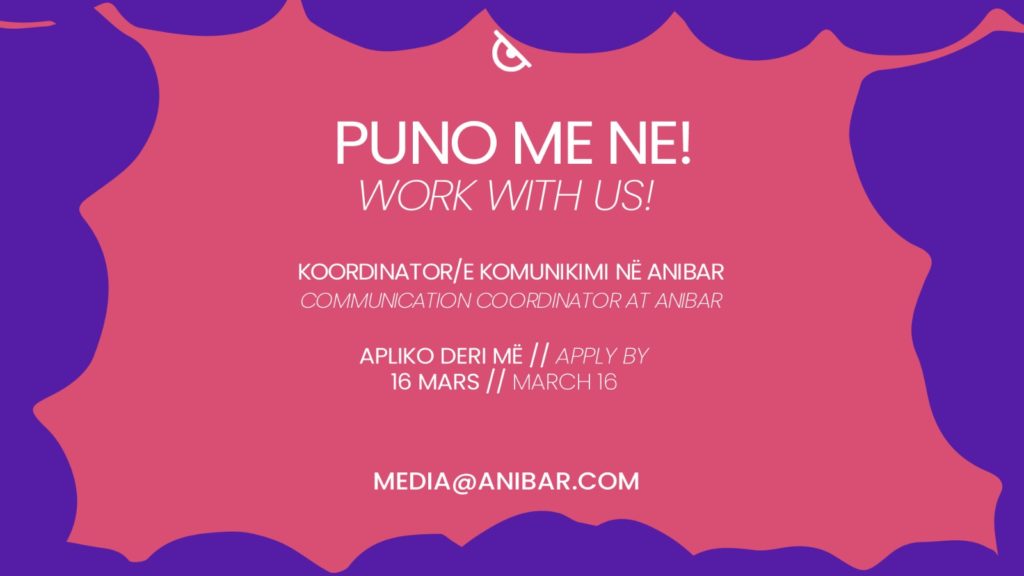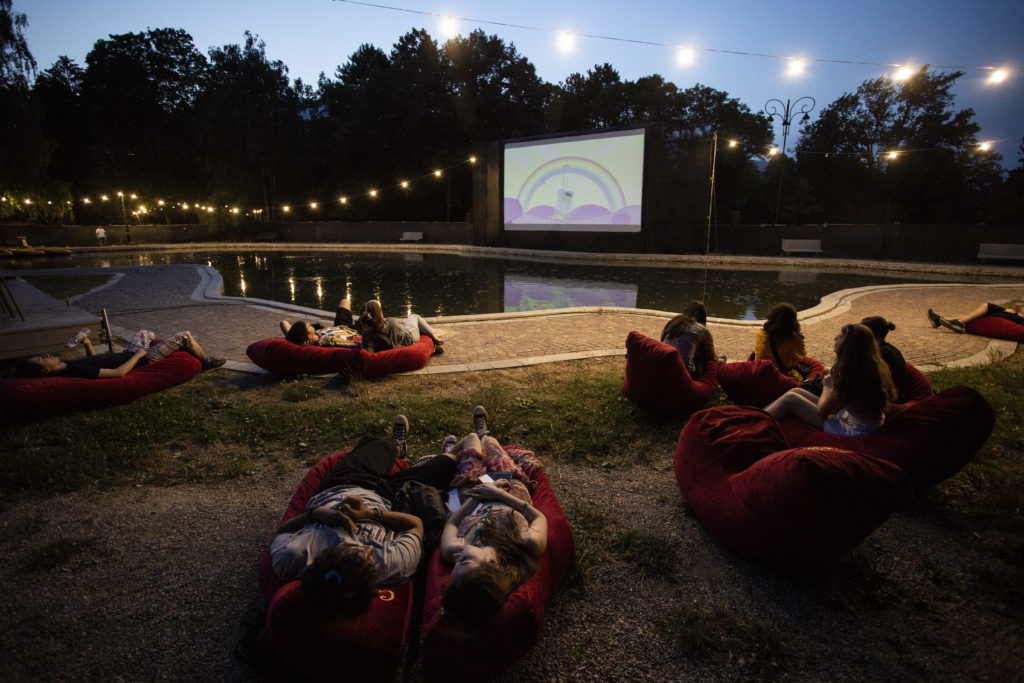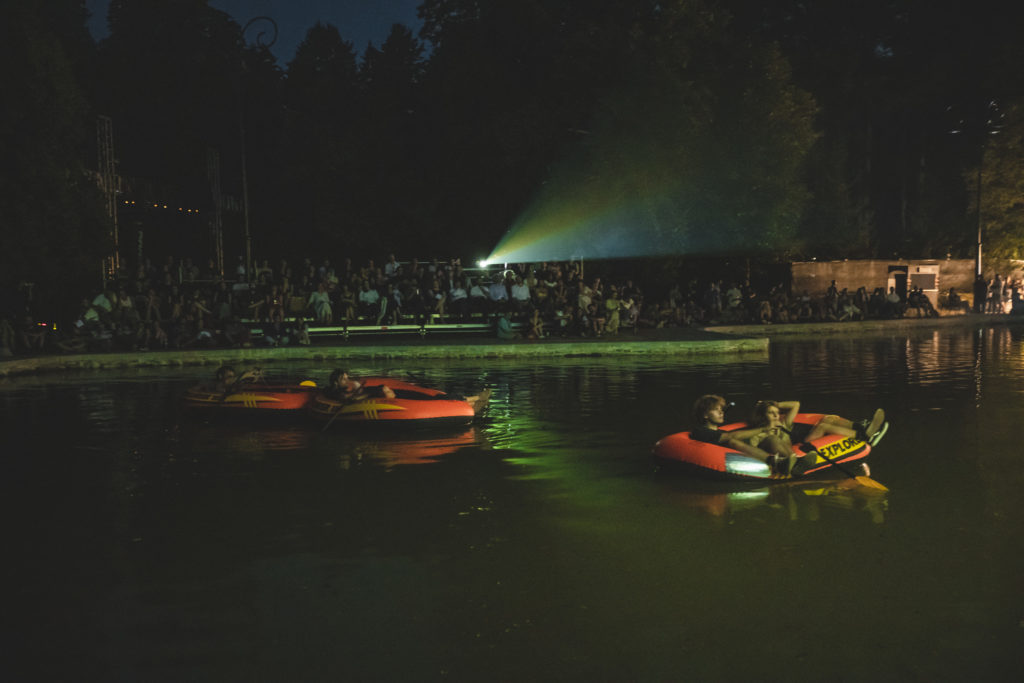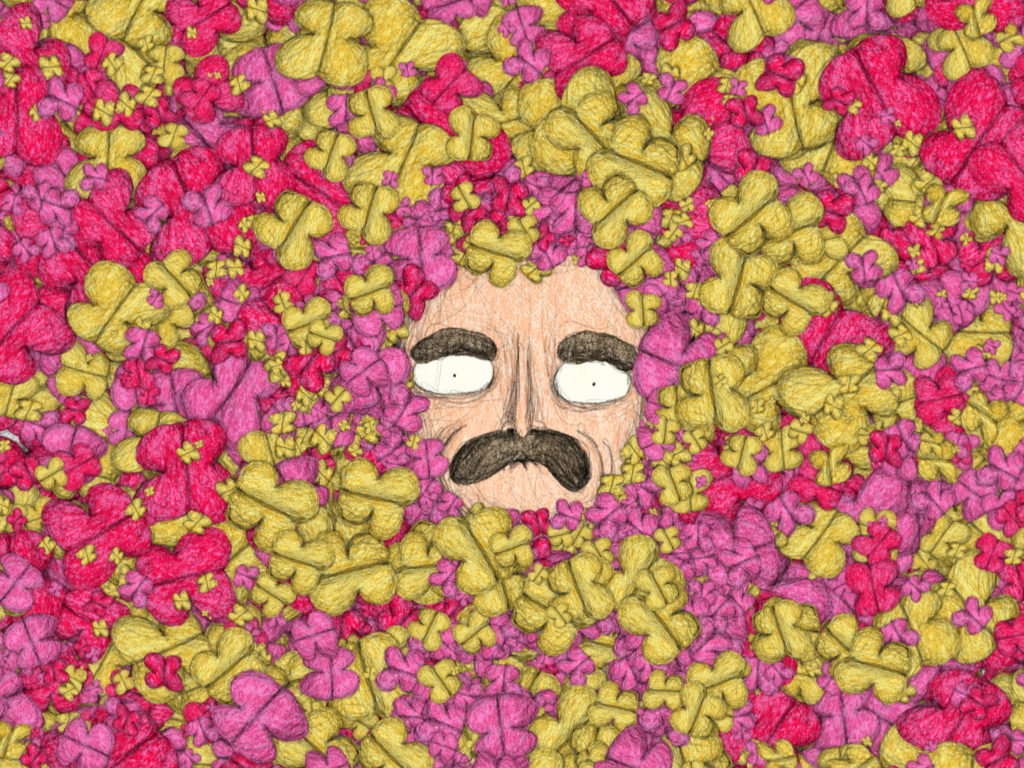Chris Keulemans: Balkan Competition
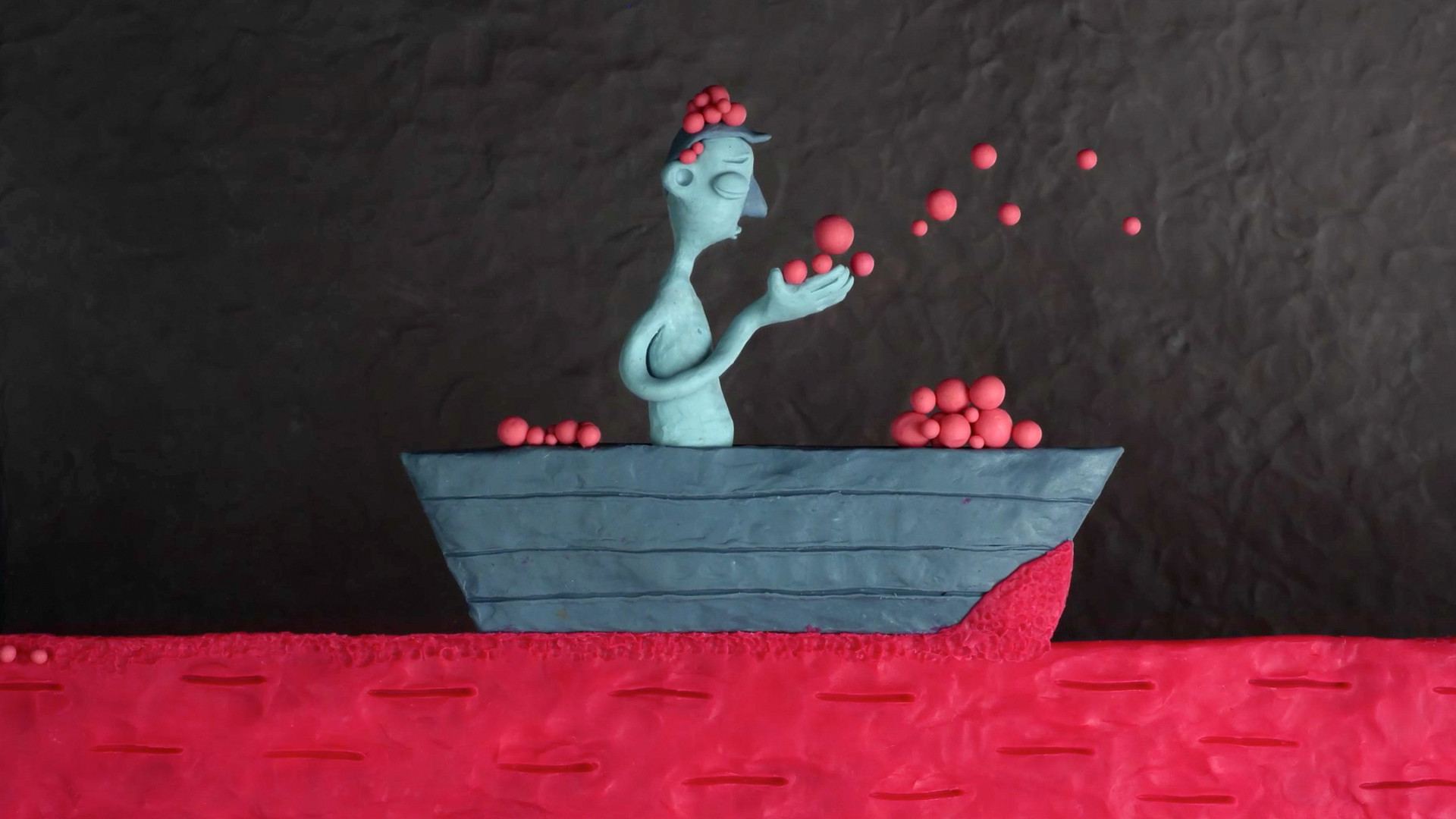
No
The seven films selected for this year’s Balkan Competition are extremely diverse in what they show. But they are surprisingly similar in what they don’t. Instead of listing what is present in these short masterpieces, here is a list of what is absent.
No fear of the empty space
Or as the Romans used to say: no horror vacui. In Iris, a lovely, unsettling piece by Lucija Bužančić, the young woman, her grandma, the bus she takes and especially the streets she walks are all sketched in the most minimal of profiles and silhouettes. The soundscape is equally spare. The vast majority of what we need to see is there, but only in our imagination. The screen shows nothing but white emptiness and some floating blobs of water color. And those delicate lines: the wrinkles above grandma’s lips, wafts of cigarette smoke. In Above Things, an almost weightless reflection on human futility by Ina Nikolova, all the objects – busstops, insects, a necklace – float by across uninterrupted surfaces. There is no fear of leaving anything but the essentials blank. As if the world outside of these brief inner monologues is too huge, too uninteresting, too predictable or maybe too scary to touch.
No shame of limitations
Maybe I read too much in the fact that most of the screen is empty. Maybe it’s simply a matter of technical or budgetary limits. The artists didn’t have the money, the time or the skills to fill up everything. But if that is the case, there is nothing apologetic about these works. They carry their shortcomings with confidence, or at least with an air of not caring at all what the world – we – might think. In the bittersweet story of a lonely housewife and her living dead, Tasks of the Day by Petya Zlateva, the protagonists are barely more than cut-out paper figures, incapable of showing more than the most basic emotions. And still, this is a very mature, nuanced story. The limitations don’t strangle the story, they shape it. All Those Sensations in my Belly by Marko Dješka is a rich, visually startling coming-of-age story about a young trans woman. Animated by five artists, including Dješka himself, it is a stylistic jumble, and certainly the protagonist him/herself is drawn in utter simplicity – but does this distract from the power of the narrative? On the contrary, it emphasizes the vulnerability of a boy who discovers she is actually a woman. Limitations are a given, in the existence of the characters on show in all these works. Mental, social, economical, technical limitations. These stories could not have been told otherwise.
No fear of text
With the exception of the visually lavishing Arka, by Natko Stipaničev, which speaks a language of its own, all these films evolve around monologues or poems. Words carry us through the vacant spaces and beyond the limitations. Text, and certainly such layered and sophisticated text, is not a mainstay in global animation. Here, it is. And that may not come as a surprise in a part of Europe where language is both an arena of conflict and an ocean of literary wealth. The poetic quality of these works, both in visual and verbal style, is impressive. Four of them come from the series MARK & VERSE, where the Bulgarian producers Compote Collective have invited animators to work with contemporary poems. Above Things is based on a short poem by Stefan Ikoga. While we see a simple necklace transform into a mouth with rotten teeth, we hear these haunting words: ‘Above today, yesterday, tomorrow, and last year, is the never, laughing at the ease with which we think we will survive.’
And there are more absences these films share. But of course it is impossible to deduce any common characteristics about the Balkans and its animation art by watching seven shorts from two countries. Four are Bulgarian, all from the same series, produced by the same collective. The other three are from Croatia, all co-funded by the Croatian Audiovisual Centre. In last year’s festival, Anibar presented a wider range of work by upcoming and established animators from all across the Balkans. This year, the selection had to be limited, of course, but it is still a shame that no Kosovar animation was included – while Anibar itself promotes, produces, teaches and discusses the art of animation like no other in this country. Does other new work from the region also have no fear of the empty space, no shame of limitations, no fear of text? And does it share the other no’s I detected in this year’s Balkan competition?
No fixed identity
Iris, in Bužančić’ film, doesn’t feel at home in the life she lives. So one day, she disappears and becomes the protagonist in someone else’s story. The young boy in All Those Sensations in my Belly doesn’t feel at home in his body. After much struggle, he changes into a woman and decides ‘to live like an average girl.’ The woman with the flowing red hair, in Dalibor Rajninger’s exquisite The Last Day, runs out to chase the autumn leaves, in their ‘trembling finesse’, because today is their very last day. And in the end, she lies down among the leaves who have floated to the ground, becomes one with them and disintegrates. In Shallow Vein by Yoana Alexandrova, each frame a thoughtful composition of clay and color, a young man takes a boat ride through the veins of his lover. He floats over the red of her bloodstream, enters her heart and finds tranquility inside her inner world. So even within works of animation, which is more than any other discipline the art of transformation, it is striking how these characters seek change, carry an ambigious identity or go for a completely new one. They are no extraordinary people to begin with. At first sight, they don’t live an insufferable life. And still, there is a restlessness. The real life is not over here. They need change, radical change, far from the here and now.
No sense of direction
There are no clear-cut happy endings here. After all the changes the protagonists go through, they achieve at best a modest kind of peace. There is nothing glorious on the horizon. They stumble, flutter, float or fall to their destiny. Where they end up relies as much on choice as on coincidence. Rarely do you get the feeling that you are watching people who have their fate in their own hands. Nowhere is this clearer than in Arka, that differs in almost every aspect from the others in this selection. Its spaces are filled with detail, into the tiniest corners of every scene. Technically, it has no limits: the 3D animation is spectacular. No word is spoken. Every character is stuck within their own personality. But in the end, the direction could lead anywhere. On board of a gigantic cruise ship, bored and wealthy passengers share the swimming pool, the dance floor and the marble statues in the hallway with pairs of animals: rhino’s, camels and flamingo’s. This is Noah’s Ark and the Titanic in one. The ship starts tilting slowly, water seeping into the ballroom, and finally sinks to the bottom of the sea. Where suddenly, all the lights come back on again and the ship embarks on its final journey, moving away into the pitchblack depth of the ocean. Destination: totally unknown.
Impossible for me to draw any conclusions about the Balkans based on this selection. I couldn’t even say if the captain of the Arka, in his white uniform and sash and stars and medals, is meant to resemble Franjo Tuđman. But by listing what is absent in these films, I feel I have learned a lot about the societies they represent.

Chris Keulemans biography:
Chris Keulemans (Tunis, 1960) is a writer, teacher and moderator, based in Amsterdam. He has founded and run three cultural centers there. Until COVID-19, he traveled a lot. He visited Peja for the first time in 2000. At the local primary school, he noticed some really talented kids.. Twenty years later, he is proud to call the Anibar team his friends. And they’ve learned him a lot about animation film. Last year, he was one of the reporters for the Anibar daily festival paper.
-The opinions, findings, and conclusions or recommendations expressed herein are those of the Author(s) and do not necessarily reflect those of the Anibar Festival

